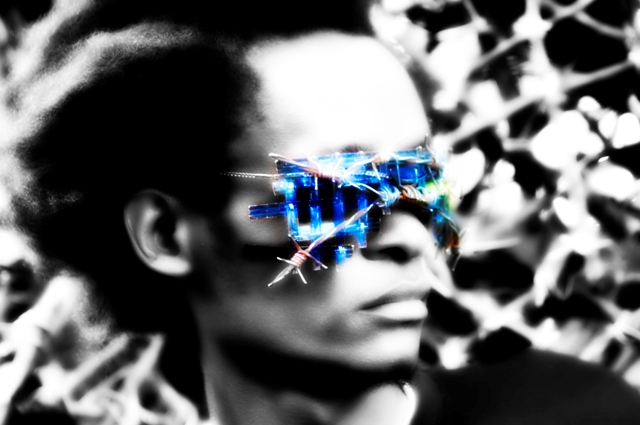News from Civsy, based on generative AI tools and retrieval-augumented real time data searchIn February 2025, Lebanese-Australian artist Khaled Sabsabi was abruptly removed from representing Australia at the 2026 Venice Biennale, igniting a firestorm of controversy within the international arts community. The decision, made by Creative Australia, followed backlash over Sabsabi’s 2007 video installation You, which features imagery of Hezbollah leader Hassan Nasrallah. Critics accused the work of glorifying a "terrorist leader," while supporters argued it was a nuanced critique of propaganda and perception. The incident has raised pressing questions about artistic freedom, political influence, and the role of public institutions in cultural representation.
The Controversial Artwork: You
Sabsabi’s You is a video installation created in 2007 and held by the Museum of Contemporary Art in Sydney. The work features Nasrallah delivering a speech following Hezbollah’s perceived victory over Israel in the 2006 war. Through layered audio and fragmented visuals, the piece explores themes of perception, fear, and ideological manipulation. According to the museum, the installation juxtaposes Western fears of cultural differences with Nasrallah’s salutation, “O most honorable, pure, and generous people, may God's peace, mercy, and blessings be upon you.” The work neither endorses nor condemns its subject but instead invites viewers to reflect on how media shapes narratives.
Despite this artistic intent, You became the focal point of criticism after an article in The Australian, published on February 12, 2025, accused Sabsabi of portraying Nasrallah as "divine" and questioned why an artist with such controversial work was chosen to represent Australia on a global stage. The article framed the selection as a failure to address concerns about antisemitism and terrorism.
Creative Australia’s Decision
On February 13, 2025, just days after announcing Sabsabi and curator Michael Dagostino as Australia’s representatives for the Venice Biennale, Creative Australia rescinded their appointments. In its official statement, Creative Australia cited concerns that Sabsabi’s inclusion posed “an unacceptable risk to public support for Australia’s artistic community.” While the organization claimed to support artistic freedom, it argued that prolonged debate over Sabsabi’s selection could undermine efforts to unite Australians through art.
The decision sparked outrage across the arts community. Critics accused Creative Australia of capitulating to political pressure and undermining its commitment to fostering challenging and thought-provoking art. Prominent artists and cultural figures condemned the move as a blow to artistic freedom. Archie Moore, a previous Golden Lion winner at Venice, called it a “dangerous precedent for censorship.”
Political Backlash
Sabsabi’s removal came amid heightened political tensions in Australia over antisemitism and Middle Eastern conflicts. Conservative politicians seized on his selection as an opportunity to criticize the Albanese government. Senator Claire Chandler raised the issue during Senate Question Time on February 15, asking why an artist who “highlights a terrorist leader” was chosen to represent Australia internationally. This intervention further politicized the controversy and amplified calls for Sabsabi’s removal.
Creative Australia denied direct political interference but acknowledged that public perception played a significant role in its decision-making process. During a Senate estimates hearing on February 25, Adrian Collette, CEO of Creative Australia, admitted that Sabsabi had not been given an opportunity to address concerns before his appointment was rescinded. Collette defended the decision by citing fears that *You* could trigger divisive narratives at a time of rising social tensions in Australia.
Reactions from Sabsabi and His Supporters
Sabsabi expressed deep disappointment over his removal. In a joint statement with Dagostino on February 14, he said they were “extremely hurt” by Creative Australia’s decision but remained committed to presenting their work on an international platform. “Art should not be censored,” Sabsabi stated. “Artists reflect the times they live in.” This was part of a joint statement with curator Michael Dagostino
Supporters rallied behind Sabsabi, launching petitions demanding his reinstatement and denouncing what they saw as an attack on artistic integrity. Resignations within Creative Australia followed shortly after the decision, with several board members stepping down in protest.
Global Implications
The controversy surrounding Sabsabi’s removal has sparked broader debates about censorship in the arts and the limits of creative expression in politically charged environments. Critics argue that Creative Australia’s actions reflect a growing trend of self-censorship among cultural institutions seeking to avoid public backlash or political scrutiny.
Sabsabi’s case also highlights how identity politics intersect with artistic representation. As a Lebanese-born Muslim artist who fled Lebanon’s civil war in 1978, his work often explores themes of displacement and marginalization. Supporters contend that his removal underscores Western institutions’ failure to engage with complex narratives from non-Western perspectives. The fallout has cast uncertainty over Australia’s participation in the Venice Biennale. During Senate hearings, Collette conceded that the Australian Pavilion might remain empty in 2026 if no suitable replacement is found.
Emblematic of broader tensions
Khaled Sabsabi’s removal from the Venice Biennale is more than just an isolated incident; it is emblematic of broader tensions between artistic freedom and political sensitivities in contemporary society. The decision has drawn attention to how public institutions navigate controversial works and whether they prioritize fostering dialogue or avoiding conflict. As debates continue over Sabsabi’s exclusion, his story serves as a reminder of art's power to provoke thought—and why protecting that power is essential for cultural progress.
Citations
1. *The Australian*: "Arts Council Takes Creative Approach to Racism" (February 12, 2025)
2. *ArtReview*: "Australia Drops Khaled Sabsabi from Venice Biennale" (February 18, 2025)
3. *The Times of Israel*: "Lebanese-Australian Artist Dropped Over Nasrallah Imagery" (February 17, 2025)
4. *The Art Newspaper*: "Australia Faces ‘International Shame’ Over Removal" (February 26, 2025)
5. *AMUST*: "The Victimisation of Khaled Sabsabi" (February 14, 2025)
Citations:
[1] https://ppl-ai-file-upload.s3.amazonaws.com/web/direct-files/44218031/ca6d0c6d-ba5b-42ef-b981-0b1ab69c2bf9/paste.txt
[2] https://themethod.art/blogs/magazine/australia-drops-khaled-sabsabi-venice-biennale
[3] https://ocula.com/magazine/art-news/australian-pavilion-venice-faces-cancellation/
[4] https://thejewishindependent.com.au/censorship-or-sensitivity-understanding-the-khaled-sabsabi-controversy
[5] https://artreview.com/australia-drops-2026-venice-biennale-artist-khaled-sabsabi-over-video-of-hezbollah-leader/
[6] https://www.amust.com.au/2025/02/the-victimisation-of-khaled-sabsabi-an-artist-caught-in-political-crossfire/
[7] https://artreview.com/the-cancellation-of-khaled-sabsabi-reveals-creative-australia-conservative-turn-venice-biennale-golden-lion-antisemitism-michael-dagostino-opinion-amelia-winata/
[8] https://www.biennialfoundation.org/2025/02/khaled-sabsabi/
[9] https://news.artnet.com/art-world/khaled-sabsabi-show-canceled-2624794
[10] https://www.timesofisrael.com/lebanese-australian-artist-dropped-from-2026-venice-biennale-over-nasrallah-imagery/
[11] https://www.theartnewspaper.com/2025/02/26/removal-of-khaled-sabsabi-from-venice-biennale-has-brought-australia-international-shame-senators-told
[12] https://art-frame.org/index.php/2025/03/07/politics-art-australias-pavilion-venice-biennale-2026/
[13] https://artreview.com/khaled-sabsabi-exhibition-cancelled-following-venice-biennale-sacking-monash-university/
[14] https://www.artnews.com/art-news/news/khaled-sabsabi-not-reinstated-australia-venice-biennale-pavilion-1234732903/
[15] https://www.instagram.com/home_as_country/p/DGCuhhhSSZ4/
[16] https://www.apollo-magazine.com/khaled-sabsabi-australian-pavilion-venice-biennale-dropped-creative-australia-backlash/
[17] https://www.theartnewspaper.com/2025/02/21/more-australian-art-world-figures-condemn-decision-cancel-khaled-sabsabi-venice-biennale-project
[18] https://www.mca.com.au/collection/artworks/2009.153/
[19] https://www.artnews.com/art-news/news/australia-drops-2026-venice-biennale-khaled-sabsabi-hezbollah-video-1234732394/
[20] https://art-frame.org/index.php/2025/03/07/the-politics-of-art-australias-pavilion-at-the-venice-biennale-2026/
[21] https://www.memoreview.net/magazine/issue-3/khaled-sabsabi-thank-you-very-much-2006-and-you-2007
[22] https://khaledsabsabi.com/media/
[23] https://today.lorientlejour.com/article/1448492/when-a-piece-about-nasrallah-displeases-those-in-power-how-a-lebanese-australian-artist-stirred-australia.html
[24] https://www.instagram.com/artnews/p/DGBOnr2z3Cp/
[25] https://jacobin.com/2025/03/australia-venice-censorship-palestine-sabsabi
[26] https://www.theartnewspaper.com/2025/02/13/khaled-sabsabi-will-no-longer-represent-australia-at-the-venice-biennale-in-2026
[27] https://visualarts.net.au/news-opinion/2025/nava-statement-support-artist-khaled-sabsabi/
[28] https://www.memoreview.net/articles/letters/open-letter-re-the-withdrawal-of-australia-s-2026-venice-biennale-representatives
[29] https://news.artnet.com/art-world/australia-drops-khaled-sabsabi-venice-biennale-2608758
[30] https://creative.gov.au/news/media-releases/announcing-australias-artist-and-curator-for-the-2026-venice-biennale/
[31] https://foundation.thinkanddotank.net.au/the-process/2024/8/13/takeaways-with-khaled-sabsabi
[32] https://www.memoreview.net/reviews/khaled-sabsabi-thank-you-very-much-2006








